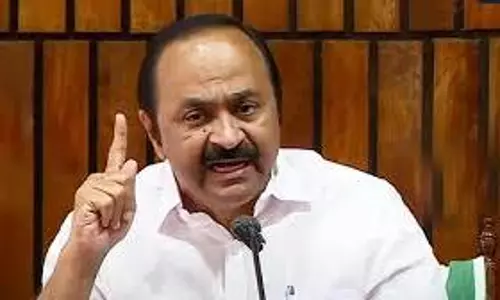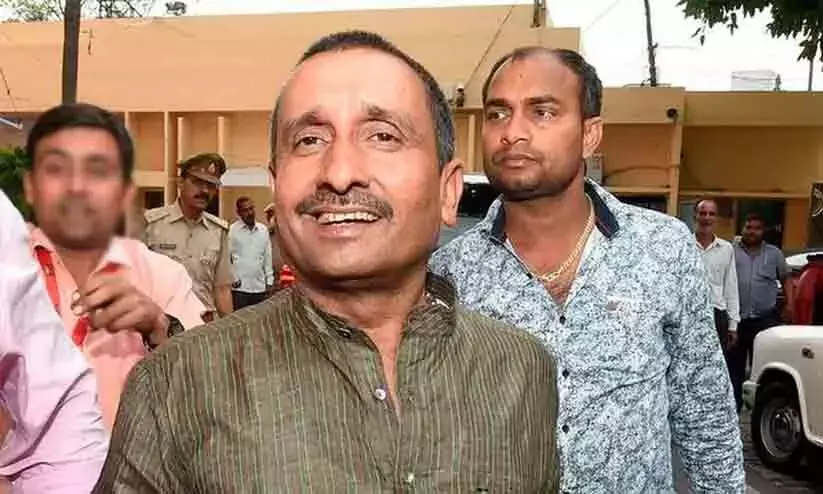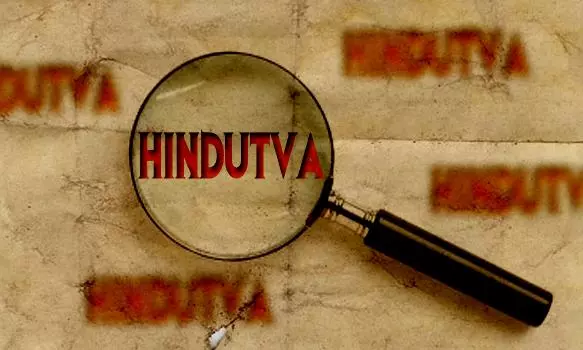
Hindutva: RSS’ false representation of Sanatana Dharma, propoganda
text_fieldsThe Hindutva movement, led by ideologues like V.D. Savarkar, B.S. Moonje, K.B. Hedgewar, and M.S. Golwalkar, has long been associated with the admiration of fascist regimes in Europe, particularly those of Benito Mussolini and Adolf Hitler. Despite the significant time and context differences, the parallels between these movements are stark, especially in their use of propaganda and the systematic distortion of truth.
At the core of the Hindutva ideology are foundational falsehoods that have been used to unite followers under a singular identity. One such lie is the claim that Hindus were the original inhabitants of Akhand Bharat, a unified India that existed long before the arrival of Muslim invaders in the 7th century.
This narrative suggests that Hindus created a great civilisation that was destroyed by foreign rule and that reclaiming this 'lost glory' is a national duty. This narrative, however, is far from grounded in reality. The idea of Akhand Bharat itself is a fabrication that seeks to erase the pluralistic history of India, ignoring the complex interplay of cultures and civilisations that shaped the subcontinent.
The very term ‘Hindu’ itself, which is central to the Hindutva ideology, is a foreign construct. Derived from the Persian word for the Indus River, the term was used by the ancient Greeks and Persians to refer to the people living beyond the Sindhu River. The term did not originally denote a specific religious identity but rather referred to the diverse cultural and social practices of the people in the region.
The idea of Hinduism as a singular, cohesive religion was largely shaped during British colonial rule, which used the term for administrative convenience, thus ignoring the region’s pluralistic beliefs and practices.
Another distortion promoted by Hindutva is the idea that the Indus Valley civilisation was the precursor to modern Hindu civilisation. The claim that the Indus Valley, a Bronze Age culture, was the cradle of Hinduism is ideologically driven rather than based on rigorous archaeological or historical evidence.
This oversimplified narrative seeks to align history with the Hindutva vision of a glorious, uninterrupted Hindu civilisation that existed millennia ago. However, the truth is that the Indus Valley civilisation predates the so-called Aryans, whose arrival in India is often linked to the formation of Hinduism. This narrative conveniently overlooks the complex and diverse nature of ancient Indian civilisation, reducing it to a monolithic, exclusive identity.
The term ‘Hindutva’ itself, coined by V.D. Savarkar in his 1923 pamphlet Hindutva: Who is a Hindu?, represents a departure from the spiritual ethos of Sanatana Dharma. Rather than defining a Hindu by religious practices, Savarkar's Hindutva defined it by a cultural and territorial identity tied to the land of India.
This marked the beginning of a movement that sought to shape India into a Hindu-majoritarian state. Savarkar and his successors, such as M.S. Golwalkar, admired European fascist ideologies, particularly those of Mussolini and Hitler. Golwalkar, in particular, expressed admiration for Hitler's treatment of minorities, seeing it as a model for creating a state where the majority religion, Hinduism, would dominate. This fascination with European nationalism and fascism has left a lasting mark on the Hindutva movement’s methods and ideology.
Hindutva’s emphasis on a monolithic Hindu identity not only ignores India’s cultural diversity but also distorts the country’s complex historical reality. The syncretic nature of India’s past, where various religions and cultures coexisted, is lost in the quest for a singular Hindu identity.
Ironically, while Hindutva promotes a nativist agenda, its ideological foundations are rooted in European ideas of nationalism and cultural superiority. Figures like Italian nationalist Giuseppe Mazzini and fascist leader Mussolini provided a template for Hindutva's organisational and ideological strategies, which sought to consolidate power around a single, dominant culture.
The Hindutva narrative further distorts the history of the Indian subcontinent by appropriating Sanskrit, often presented as the ‘language of the gods’. While Sanskrit holds an important place in India’s intellectual history, its origins lie in the Proto-Indo-European language family, which also includes Greek and Latin. This fact undermines the myth that Sanskrit is a purely indigenous language, thereby challenging Hindutva’s claim of a homogeneous, self-contained culture.
A central tenet of Hindutva’s agenda is the creation of Akhand Bharat, or undivided India, which is presented as a lost paradise that must be reclaimed. The concept of a unified India, however, is a modern invention, primarily shaped during British colonial rule. Before the arrival of the British, the Indian subcontinent was not a single, unified entity.
Akhand Bharat was a collection of independent kingdoms, empires, and regions, each with its own governance, culture, and identity. The colonial boundaries drawn by the British, which later became the borders of modern India and Pakistan, were not based on any pre-existing political or cultural unity.
The notion of Akhand Bharat promoted by Hindutva ideologues is part of a broader attempt to rewrite India’s history in a way that disregards its diversity and pluralism. By glorifying an imagined Hindu-centric past, Hindutva aims to create a sense of pride while erasing inconvenient truths about India’s shared history with other religious and cultural groups, particularly Muslims and Christians. This selective appropriation of history distorts the Indian narrative, reducing it to a homogeneous vision that is not only factually incorrect but also dangerous for the country’s social cohesion.
The RSS and BJP, the primary vehicles of the Hindutva movement, have also relied on misinformation and distortion to further their political goals. These organisations have been instrumental in promoting false narratives about the country’s history, religious communities, and even its economy.
By framing Muslim rulers as oppressive invaders and promoting the myth of Hindu victimhood, they have created an ‘us vs. them’ narrative that fuels religious polarisation. The Hindutva-led ruling establishment has also spread misleading claims about the economy, such as the false promise of black money being repatriated or the exaggeration of job creation figures, all of which have been dismissed by experts and independent analysts.
Furthermore, the BJP has promoted divisive myths about Muslims, such as the fictitious concept of ‘love jihad’, a claim that Muslim men are deliberately luring Hindu women to convert them. The party has also sought to delegitimise opposition parties by labelling them as anti-national or dynastic, while simultaneously promoting its own family-based leadership structure. This rhetoric, combined with technological propaganda via social media and IT cells, has allowed the BJP to control the narrative and suppress dissenting voices.
Based on an article ‘BJP, RSS and 99 Lies From Goebbels’ Grandchildren,’ by Anand Teltumbde, former CEO of PIL, professor at IIT Kharagpur, and writer and civil rights activist, published in The Wire.























